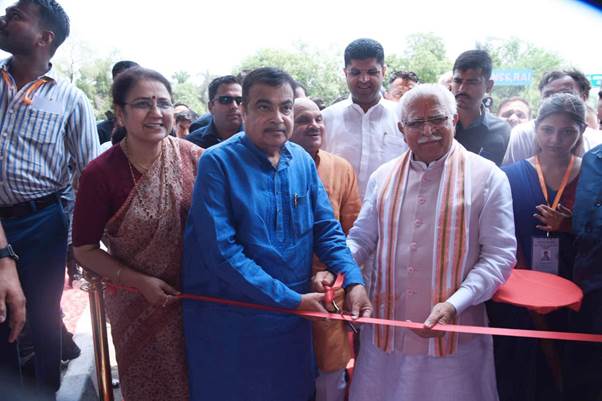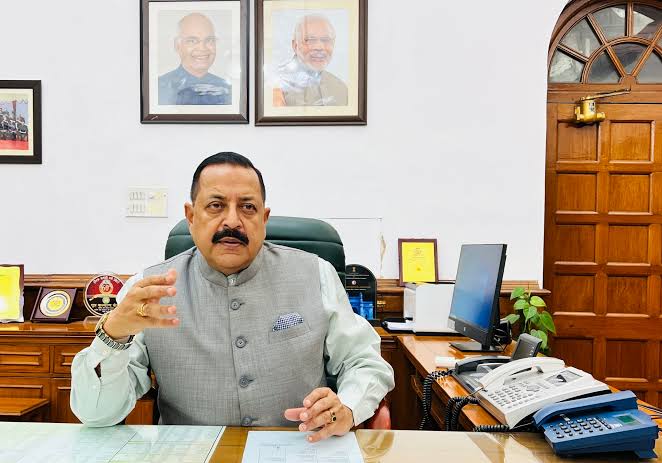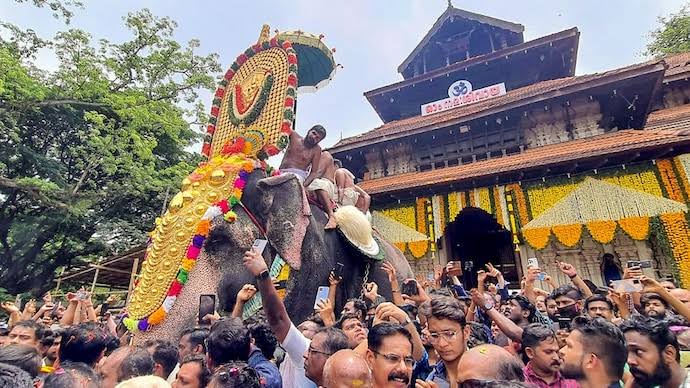In a significant boost to Himachal Pradesh’s infrastructure landscape, Union Minister for Road Transport and Highways Nitin Gadkari inaugurated and laid the foundation stone for 15 National Highway projects and a ropeway project in Hamirpur. This ₹4,000 crore investment marks a major step towards enhancing connectivity across the state, fostering economic development, and promoting religious tourism.
 The diverse projects address various connectivity challenges, strategically targeting specific areas and needs:
The diverse projects address various connectivity challenges, strategically targeting specific areas and needs:
- Reduced Travel Time and Improved Traffic Flow: Construction of the Theog bypass and improvements to existing roads aim to alleviate traffic congestion on critical routes. This includes the Mandi-Hamirpur stretch, where travel time is expected to be reduced by 15 kilometres, impacting not only commuters but also commercial vehicles reliant on efficient transportation networks.
- Enhancing Accessibility and Religious Tourism: The new ropeway project drastically reduces the arduous journey to the revered Bijli Mahadev Temple, transforming the pilgrimage experience from a lengthy trek to a convenient 7-minute ride. This improved accessibility is anticipated to attract more devotees throughout the year, potentially boosting religious tourism in the region and its associated economic benefits.
- Boosting Logistics and Healthcare: The development of a 4-lane missing link and cable-stayed bridge on National Highway 503A will provide crucial connectivity to Darlaghat and Bilaspur. This improved infrastructure is expected to streamline logistics operations for the Darlaghat Cement Factory, potentially reducing transportation costs and increasing efficiency. Additionally, it will enhance access to essential healthcare services at AIIMS Bilaspur, positively impacting the well-being of residents in surrounding areas.
The comprehensive initiative encompasses various aspects of infrastructure development, each contributing to a broader vision of progress:
- Bridge Construction: The construction of new bridges, like the 196-meter bridge on the Kalruhi section and the 225-meter bridge on National Highway 503, aims to improve traffic flow by eliminating bottlenecks and reducing congestion points, facilitating smoother movement of people and goods.
- Landslide Mitigation: Implementation of slope protection measures along vulnerable stretches aims to mitigate landslide risks, particularly during monsoon seasons, ensuring safer travel on challenging terrains. This proactive approach safeguards lives and minimizes disruptions caused by landslides.
- Improved Safety and Efficiency: Construction of a 500-meter tunnel on National Highway 5 will bypass treacherous terrains, expediting travel and improving safety for commuters. Additionally, a 410-meter underpass is planned to facilitate smoother traffic flow and reduce wait times at intersections, particularly beneficial for heavily congested areas.
Transforming Himachal Pradesh: A Multi-Pronged Approach
This large-scale infrastructure development project is anticipated to yield several positive outcomes for Himachal Pradesh, encompassing various aspects critical to the state’s progress:
- Socioeconomic Development: Improved road connectivity is expected to unlock the economic potential of various regions by facilitating the movement of goods, services, and people. This can lead to increased trade, tourism, and job creation, contributing to the overall economic growth of the state. By creating a more conducive environment for businesses to operate and flourish, the project has the potential to attract further investments and stimulate long-term economic prosperity.
- Enhanced Safety: Improved road conditions, strategic bypasses, tunnels, and underpasses are expected to significantly improve travel safety, particularly on hilly terrains, reducing accidents and saving lives. This fosters a safer environment for residents, tourists, and those transporting goods across the state, promoting a sense of security and well-being for all.
- Sustainable Tourism: Easier accessibility to religious sites, scenic locations, and natural wonders is projected to attract more tourists, promoting sustainable tourism practices. This can generate revenue for local communities, allowing them to invest in further development and infrastructure improvements, creating a positive cycle of growth. Responsible tourism initiatives can be implemented to ensure that the influx of visitors is managed effectively, preserving the state’s natural and cultural heritage while maximizing the economic benefits for local communities.




